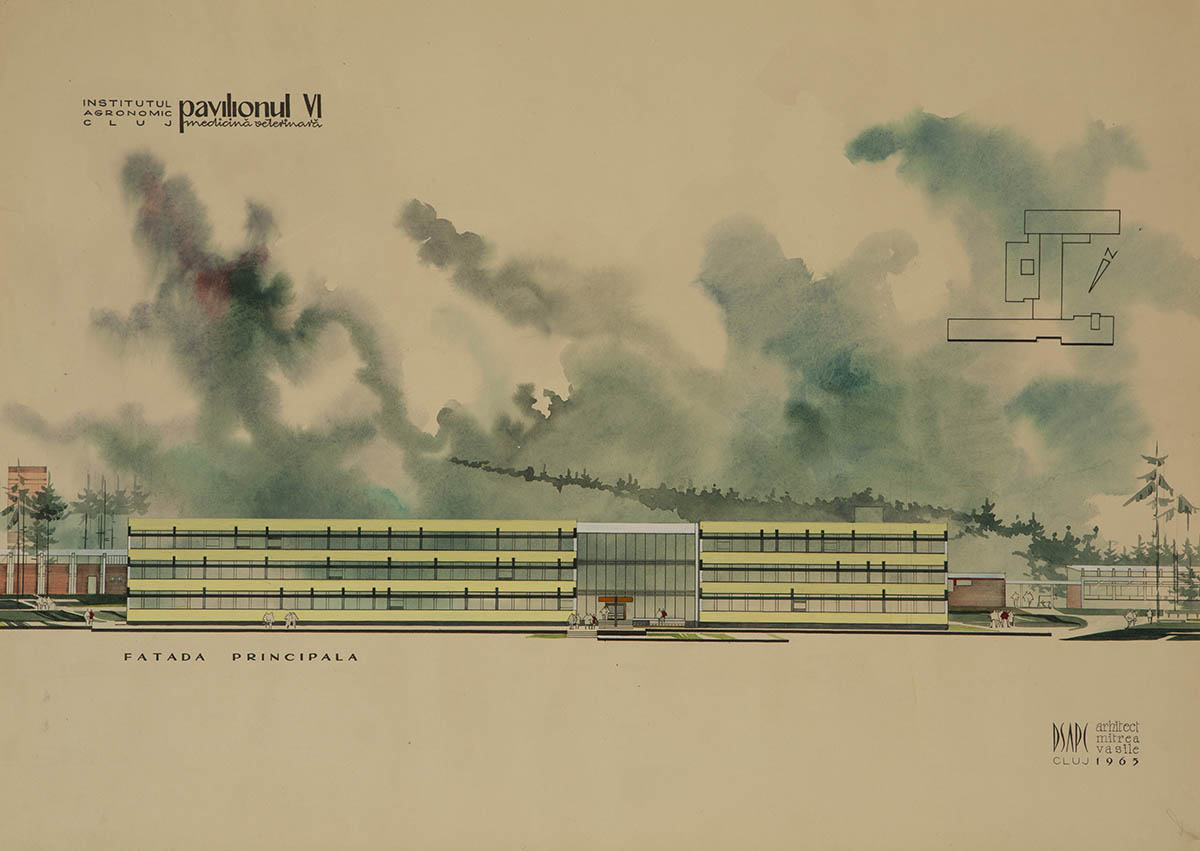
The Romanian Pavilion will focus on the various forms of intelligence at the 2025 Venice Biennale
worldarchitecture.org
html PUBLIC "-//W3C//DTD HTML 4.0 Transitional//EN" "http://www.w3.org/TR/REC-html40/loose.dtd"The Romanian Pavilion has announced its curator and details for the upcoming exhibition at the 2025 Venice Architecture Biennale.The exhibition, titled Human Scale, will explore the various forms of intelligence, including conceptual, historical, technological, artistic, and emotional perspectives, as they are represented in architectural drawing, which serves as a means of thinking and modeling built space.Romania will be represented at the 19th International Architecture Exhibition in the 2025 Venice Architecture Biennale by Human Scale, an exhibition and research project by artist Vlad Nanc and the Bucharest-based architecture company Muromuro.Vlad Nanc, Finally Together, 2017. Image courtesy of the Romanian PavilionHuman Scale, curated by Cosmina Goagea, will be displayed in the New Gallery of the Romanian Institute of Culture and Humanistic Research in Venice as well as the Romanian Pavilion at the Giardini della Biennale. It will encourage contemplation on the relationship between architecture and visual arts by contrasting the drawings of Romanian architects from the 20th century with the contemporary artwork of Vlad Nanc."Building on Vlad Nancs artistic research, Human Scale proposes an answer to the Biennale theme focusing on Collective Intelligence specifically, how we can critically revisit 20th century architecture through architectural drawings," said Cosmina Goagea, curator of Human Scale."By looking at the people depicted in the drawings, we better understand architecture and the public spaces role, as intended and envisioned by the architects.""By studying the original drawings and intentions of these 20th century architects, we hope new keys can be found to re-inventing our existing buildings and adapting them for 21st century life," Goagea added.Inspired by scale models in architectural plans, Vlad Nanc has been creating a series of works at the nexus of drawing and sculpture since 2017. To highlight the presence of people in architecture and their significance as a key component of the built environment, Nanc enlarges these figures to human scale in a gesture that he interprets as one of "liberation" from the sketch.Vlad Nanc, Ioana Chifu, and Onar Stnescu. Image Alex GlmeanuHuman Scale will investigate the essential, affective, and symbolic roles of architecture, building on Nanc's work. A collection of drawings organized chronologically will be on exhibit, reconstructing a condensed social history of Romanian architecture conceived or constructed during the 20th century, highlighting significant events, ideologies, schools of thought, and debates.The use of drawings as a means of projecting political and social power, as well as the ways in which architecture shapes collective identities and influences historical narratives, will be examined through a presentation of historical maps from the 15th to 19th centuries that feature people as allegorical presences."Humans are the unifying element in architectural drawings, transcending time. By looking at how people are drawn throughout the 20th century, we hope to underline their relevance and centrality to architecture in the 21st century, challenging visitors to look at our built environment in a different way and think about how architecture works for the people," said artist Vlad Nanc."In the Romanian Pavilion, a central, immersive installation is defined by massive translucent sheets that fill the space. These diffuse, almost immaterial walls blur the exterior while highlighting those who engage with the space," said Ioana Chifu and Onar Stnescu of Muromuro Studio."The installation reverses focus: architecture disappears, placing human interaction at the forefront. The walls serve as a dialogue space between human silhouettes drawn from architectural drawings and the blurred figures of visitors," Chifu and Stnescu added."The installation subtly alters perception through shifts in scale, focus, and ambiguity, creating a meditative space where visitors rethink their relationship with the built environment and critically reflect on the future of architecture," they continued.The curator, Cosmina Goagea. Image Drago LumpanThe RICHR's New Gallery will be transformed into a research and experimental space that will include the documentation materials for Romania's Human Scale exhibition, which include a vast collection of drawings by 20th-century Romanian architects. With a central workstation situated between two pillarsone supporting an exhibition space and the other a decade-organized archivethe display design encourages in-depth research.The 2025 Venice Architecture Biennale will take place fromMay 10 to November23 November 2025 at the Giardini, the Arsenale and various venues in Venice, Italy.Besides Luxembourg's contribution, other contributions at the Venice Architecture Biennale include the Luxembourg Pavilion's Sonic Investigations exhibition, the Albanian Pavilion's "Building Architecture Culture" exhibition, the Turkey Pavilion's "Grounded" exhibition, the Pavilion of the United Arab Emirates's Pressure Cooker exhibition, the Finland Pavilion's The Pavilion Architecture of Stewardship exhibition. Find out all exhibition news on WAC's Venice Architecture Biennale page.Exhibition factsExhibition name:Human ScaleCommissioner:Attila KimCurator:Cosmina GoageaExhibitors:Vlad Nanc & Muromuro Studio (Ioana Chifu, Onar Stnescu)Project Team:Organisers:Ministry of Culture, Ministry of Foreign Affairs, Romanian Cultural Institute, Romanian Union of ArchitectsProject Coordinator:Corina BuceaExecutive Producer:Ana CiobanuStrategic Funding Coordinator:Suzana VasilescuInternational PR: Sam TalbotArt Director:Otilia FiastruCommunication:Vlad Tau.ancePR:Simona RadoiSocial Media: Andreea IlieProducer:Arrogant FilmsCo-Producers:Suprainfinit Gallery, Nodul Creativ AssociationThe top image in the article: Vasile Mitrea, Drawing of the Veterinary Medicine Pavilion of the Agronomic Institute (Cluj), 1965. Image courtesy of the Romanian Pavilion.> via Romanian Pavilion
0 Commenti
·0 condivisioni
·76 Views


